Original: Ponyo, Hyewon Jeong, Xangle
Translation: Zen, PANews
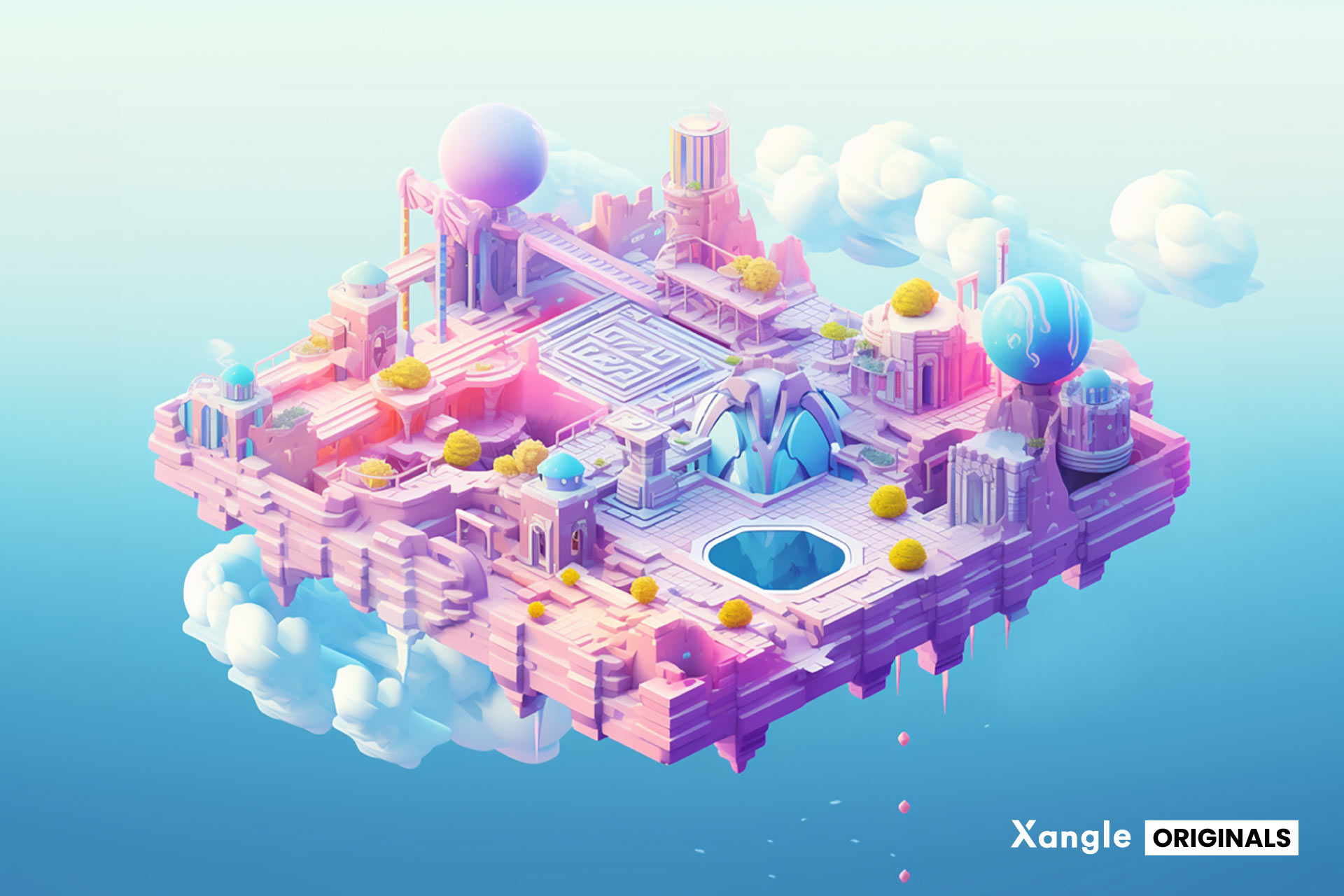
From the launch of the first blockchain game Crypto Kitties to the Play-to-Earn concept proposed by Axie Infinity, and the entry of global gaming giants such as Ubisoft, SEGA, and Nexon into the blockchain gaming market, blockchain games have been around for six years. However, mainstream adoption of blockchain games remains difficult to achieve. Not only that, many gamers have a negative view of cryptocurrency and NFTs, and blockchain games based on popular IPs have also received disappointing reviews. When will the era of blockchain games truly arrive? Why do gamers still hold a skeptical attitude towards this? What does it take for blockchain games to establish themselves? This article aims to address these fundamental questions and provide insights into the future direction of the blockchain gaming market.
When will the era of blockchain games begin?
A large amount of capital has flowed into the blockchain gaming market in just a few years
Gaming is one of the areas where blockchain technology has received a large amount of investment after infrastructure. In 2021, investment in blockchain games gained strong momentum, with successful cases such as Axie Infinity and MIR4 continuously emerging. In terms of investment and financing, the investment was only $151.6 million in 2020, but it has surged to $5.5 billion in 2021, and further increased to $8.5 billion in 2022. Due to the overall downturn of cryptocurrencies, investment in 2023 is expected to decrease to around $2.3 billion. Overall, the cumulative investment from 2021 to 2023 reached a staggering $16.3 billion.
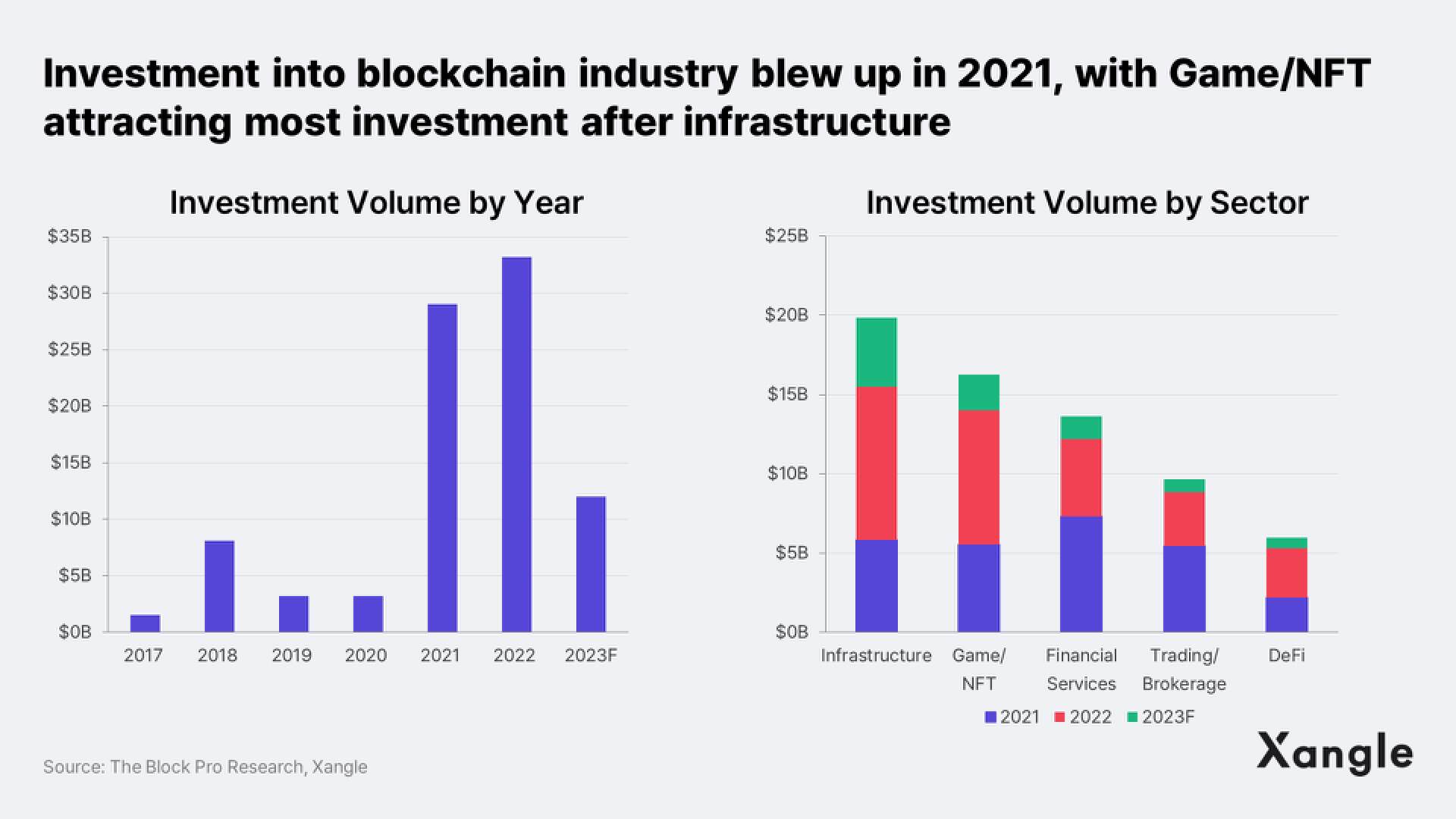
This level of investment is already approaching that of the traditional gaming industry. The proportion of investment in blockchain games as a part of the entire gaming industry has steadily increased, from 1.1% in 2020 to 9.5% in 2021, 38.3% in 2022, and a staggering 57.2% in the first quarter of 2023. However, despite the influx of funds into the blockchain gaming market, it has not yet become a dominant force. Why is it difficult for blockchain games to gain a foothold? How will it develop in the future compared to the development of traditional PC and mobile games?
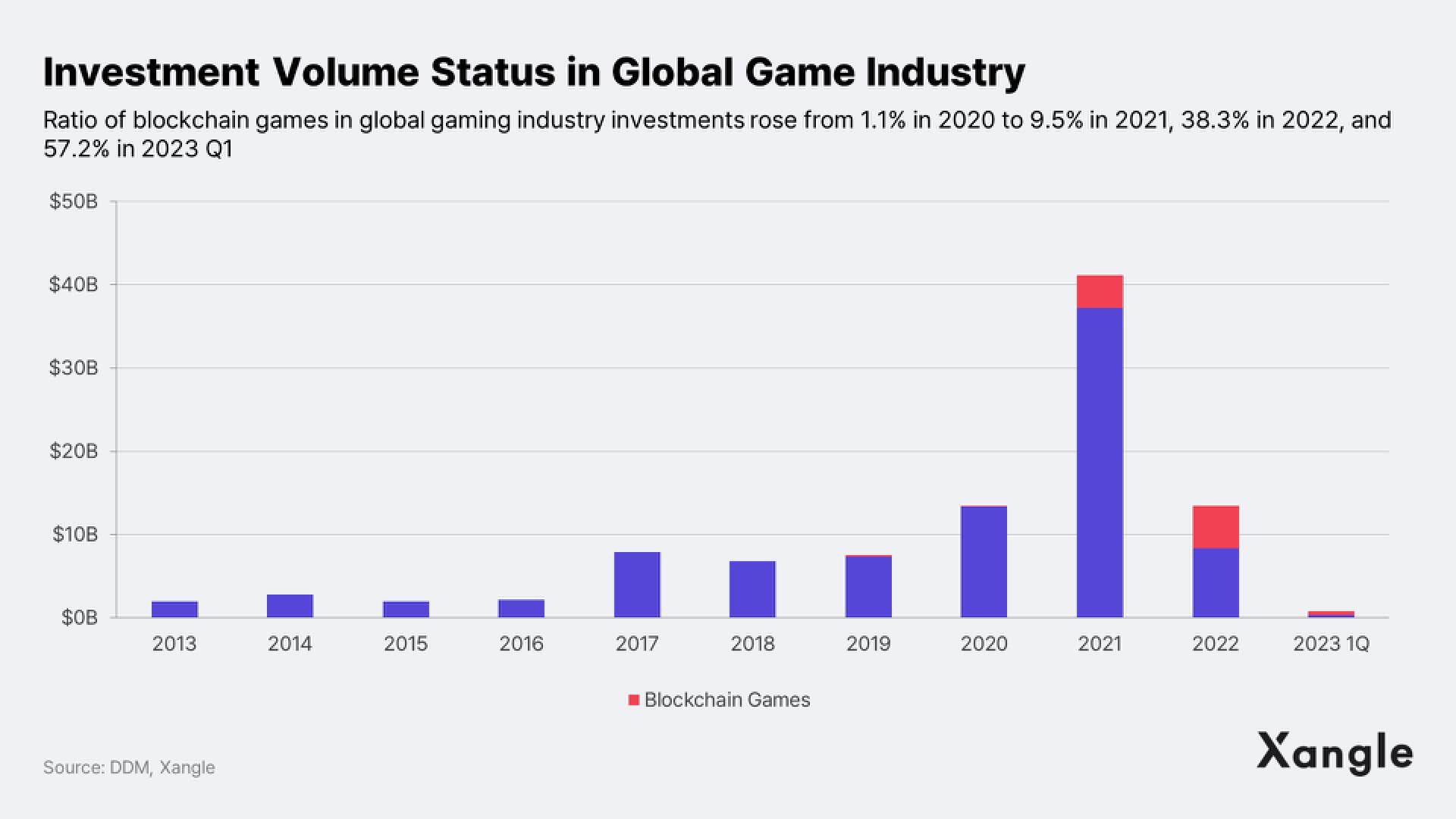
PC and mobile games are direct beneficiaries of technological progress
The development of the gaming industry can be understood through three major turning points. The gaming industry underwent revolutionary changes in the 1970s with the introduction of arcade games, and experienced three more significant transitions in the 1980s (console games), 2000s (PC games), and 2010s (mobile games). From less than $5 billion in the early 1970s, the revenue of the gaming industry grew to $45 billion in the 1980s, then from $80 billion in the early 21st century to $140 billion in 2010, with significant growth at each stage.
As of 2022, the scale of PC games reached $40.5 billion, and mobile games reached $92.6 billion, accounting for 22% and 55% of the entire gaming industry, respectively. However, neither PC games nor mobile games initially reached the current substantial level of revenue. The gap between the emergence of PC/mobile games and the accelerated growth of their revenue is shown in the following figure.
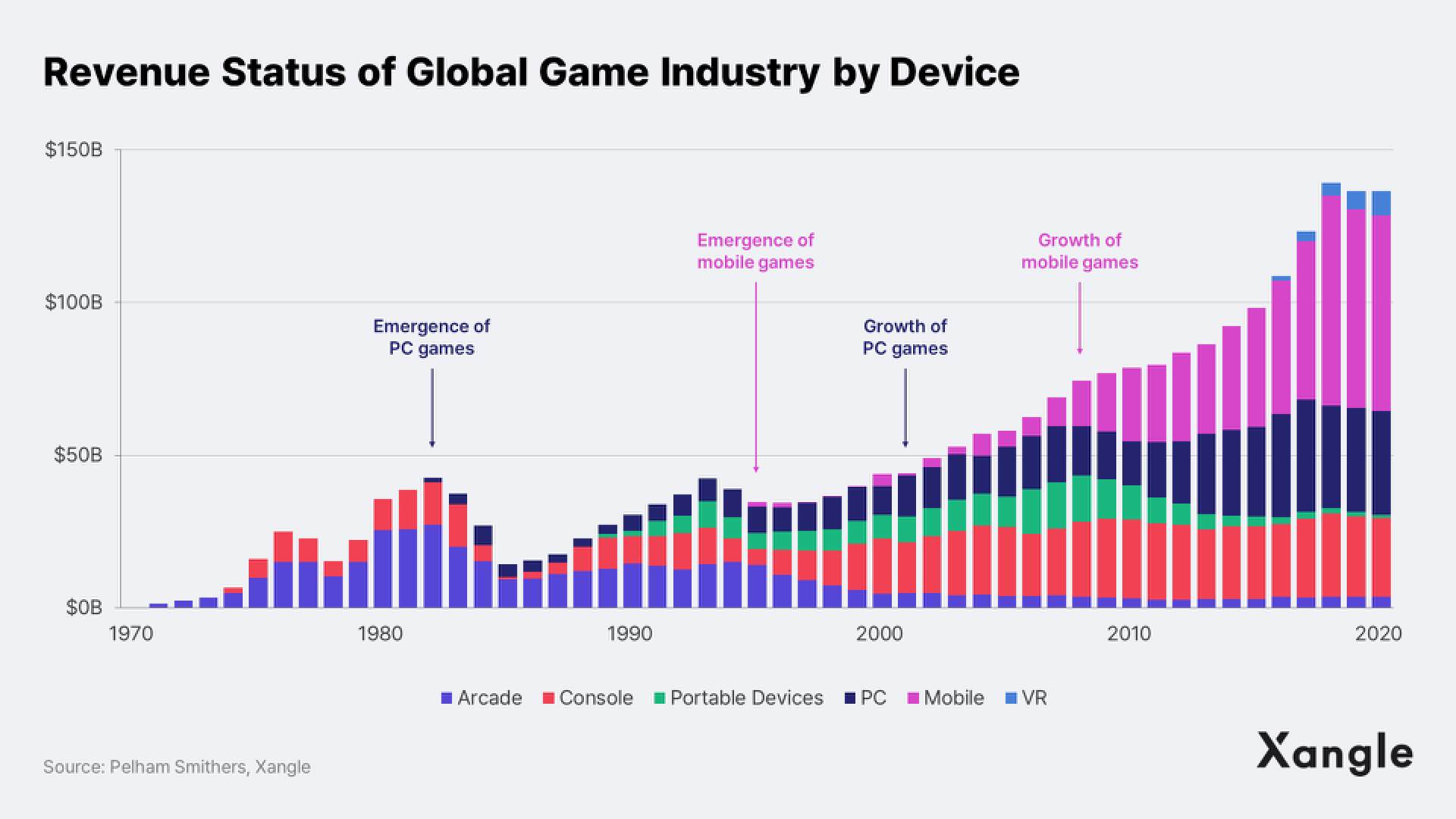
When PC games were just gaining mainstream recognition, their annual revenue was only $1 billion, accounting for only 2.4% of the entire gaming industry at the time. It took 13 years for PC game revenue to grow to $10 billion (29.4%), and another 25 years to reach $15 billion (22.1%). Mobile games followed a similar trajectory, with revenue of $1 billion in the early years, accounting for 2.9% of the total gaming industry, taking 10 years to reach $10 billion (16.1%), and 12 years to reach $15 billion (20.4%). Although this new wave of games, such as mobile games, has shown a significantly faster growth in revenue, these sub-markets still need a considerable amount of time to gain significant traction. In other words, both PC games and mobile games took a long time to establish and develop their markets.
So, what are the key factors driving the growth of the PC and mobile gaming markets?
The primary condition is the widespread adoption of hardware and technological progress. The expansion of PC gaming and the development of the internet have driven the growth of PC games. Similarly, the expansion of mobile games coincided with the widespread adoption of smartphones and the development of mobile communication technologies such as WiFi, 3G, and 4G. As shown in the figure below, the revenue of PC and mobile games has grown in tandem with the growth of related technologies. Personal computers and the internet have allowed players to enjoy games with countless other players simultaneously, breaking free from the limitations of playing games alone, thereby changing the gaming landscape. On the other hand, smartphones and mobile communication have transcended the existing time and space limitations of games, allowing players to connect to games anytime, anywhere. The development of gaming hardware has created a more convenient and enjoyable gaming environment, attracting new groups of gamers and contributing to the expansion of the PC and mobile gaming markets.

Secondly, the development of new game types has played an important role. The history of PC and mobile games is a process of successful games constantly exploring new types and expanding them. With the success of new genres, game developers are committed to developing games in these genres, which in turn promotes market growth and activity. For example, "Ultima Online" (1997) was not the first MMO (Massively Multiplayer Online) game, but it played a crucial role in shaping the MMORPG (Massively Multiplayer Online Role-Playing Game) genre. The success of "Ultima Online" paved the way for MMORPG games such as "EverQuest" (1999), "Runescape" (2001), and "World of Warcraft" (2004). "DotA" (2003) is also a pioneer of the MOBA (Multiplayer Online Battle Arena) genre, giving rise to games such as "League of Legends" (2009) and "DotA 2" (2013).
Now let's look at mobile games. With the emergence of smartphones, after the rapid market growth of mobile games in the late 2000s, a large number of casual games flooded the market following the success of "Angry Birds" in 2009, and games like "Cut the Rope" (2010) and "Candy Crush Saga" (2012) marked the arrival of the casual gaming era. Subsequently, the success of multiplayer core strategy games such as "Clash of Clans" (2012), as well as MMO strategy games like "Game of War: Fire Age" (2013) and MOBA games like "Honor of Kings" (2015), further expanded the market. The success of "PUBG Mobile" (2018) also demonstrated that the battle royale genre can thrive on mobile devices, paving the way for the mobile adaptation of the PC game "Fortnite Battle Royale" (2017).
In conclusion, the growth of PC and mobile games can be attributed to technological progress and the exploration of new game types. Among these, technology has played a more significant role in driving market growth. When we look at the scale of revenue, the PC gaming market expanded with the emergence of internet connectivity services, while the mobile gaming market took off with the widespread adoption of smartphones. The improvement in internet speed, as well as the enhancement of specifications for personal computers and smartphones, brought about enhanced graphics and faster frame rates, creating an environment that can accommodate more gamers and provide a smoother gaming experience. Multiplayer game modes such as MMORPG, MOBA, and battle royale emerged, making game types more immersive. It is precisely because the growth of PC and mobile games depended on the widespread use of previous hardware and technological progress that it took them a considerable amount of time to rise.
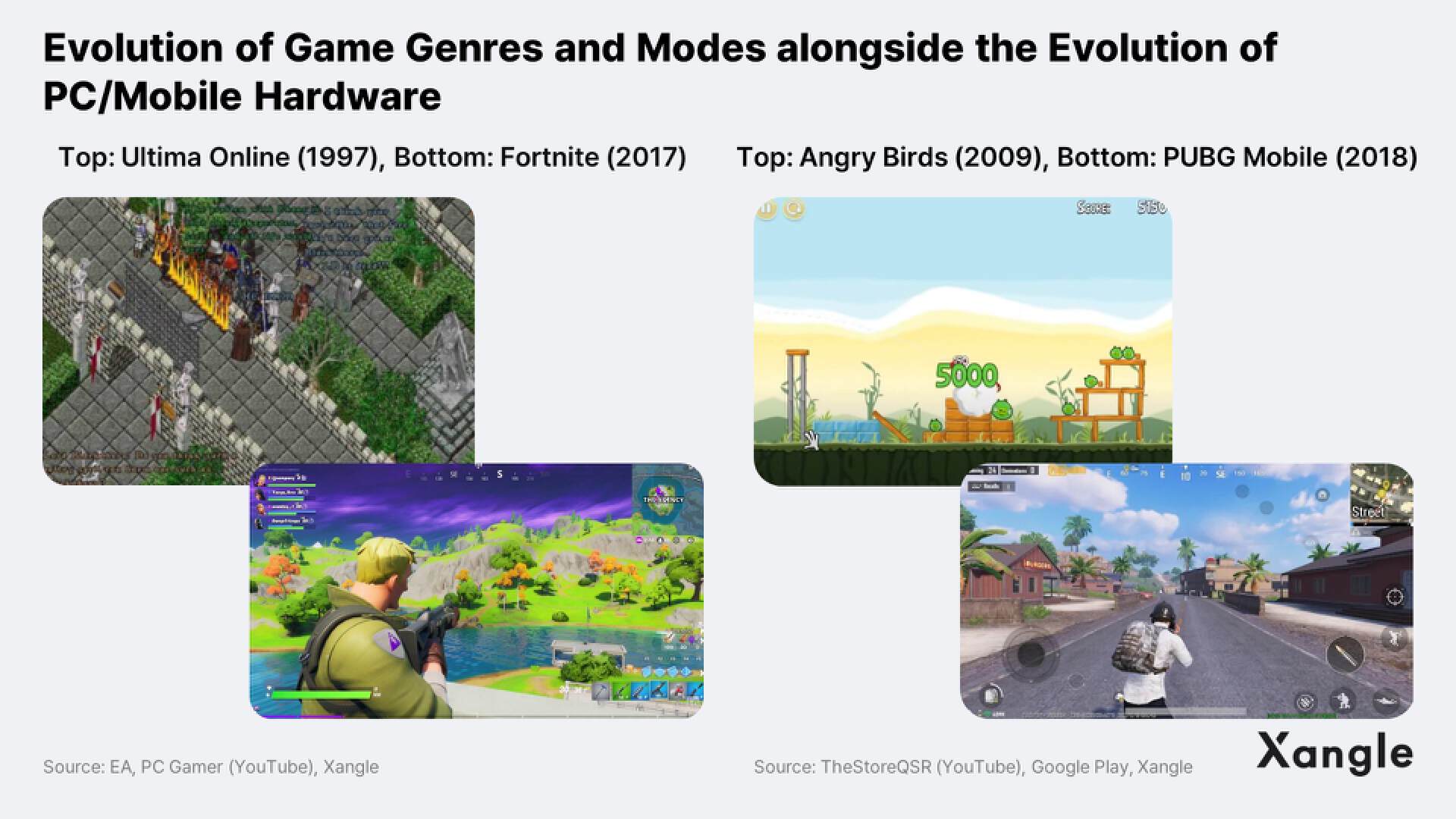
It is Suggested to Take a Long-Term View of Blockchain Games
So, how should we view blockchain games? When examining market size and growth rates, the short-term market size may not seem large, but the current growth rate is considered promising.
First, as blockchain games have not come with new hardware, the short-term market size of blockchain games is expected to be small. With the surge of new hardware, benefiting from technological advancements in internet, mobile communication, and semiconductor development, PC and mobile games naturally become the main content on the platforms. As a result, they occupy a large part of the expanding market with broader hardware.
On the other hand, blockchain games run on already popular and widely used PC and mobile devices, which means blockchain games must compete with existing games in the saturated PC and mobile game markets. They need to compete for limited market share in an environment with limited room for growth. In other words, unlike PC and mobile games, which directly benefit from the growth of the hardware industry, blockchain games are unlikely to achieve the same level of revenue in the short term, making it difficult for them to be on par with PC or mobile games.
Although the short-term market size may not be large, it is expected that the mature blockchain gaming market will develop as new hardware for blockchain games becomes more widespread. Therefore, it is suggested to consider the growth potential of blockchain games from a longer-term perspective, as further elaborated below.
So, is the growth rate of the blockchain gaming market really slow? The blockchain gaming market is expected to grow from $746.1 million in 2018 to $7.4 billion in 2023, with an average annual growth rate of 58.1%. Although the market size in the first five years may be smaller than that of PC or mobile games, the absolute growth rate shows a positive trend, and even presents a higher growth trajectory.
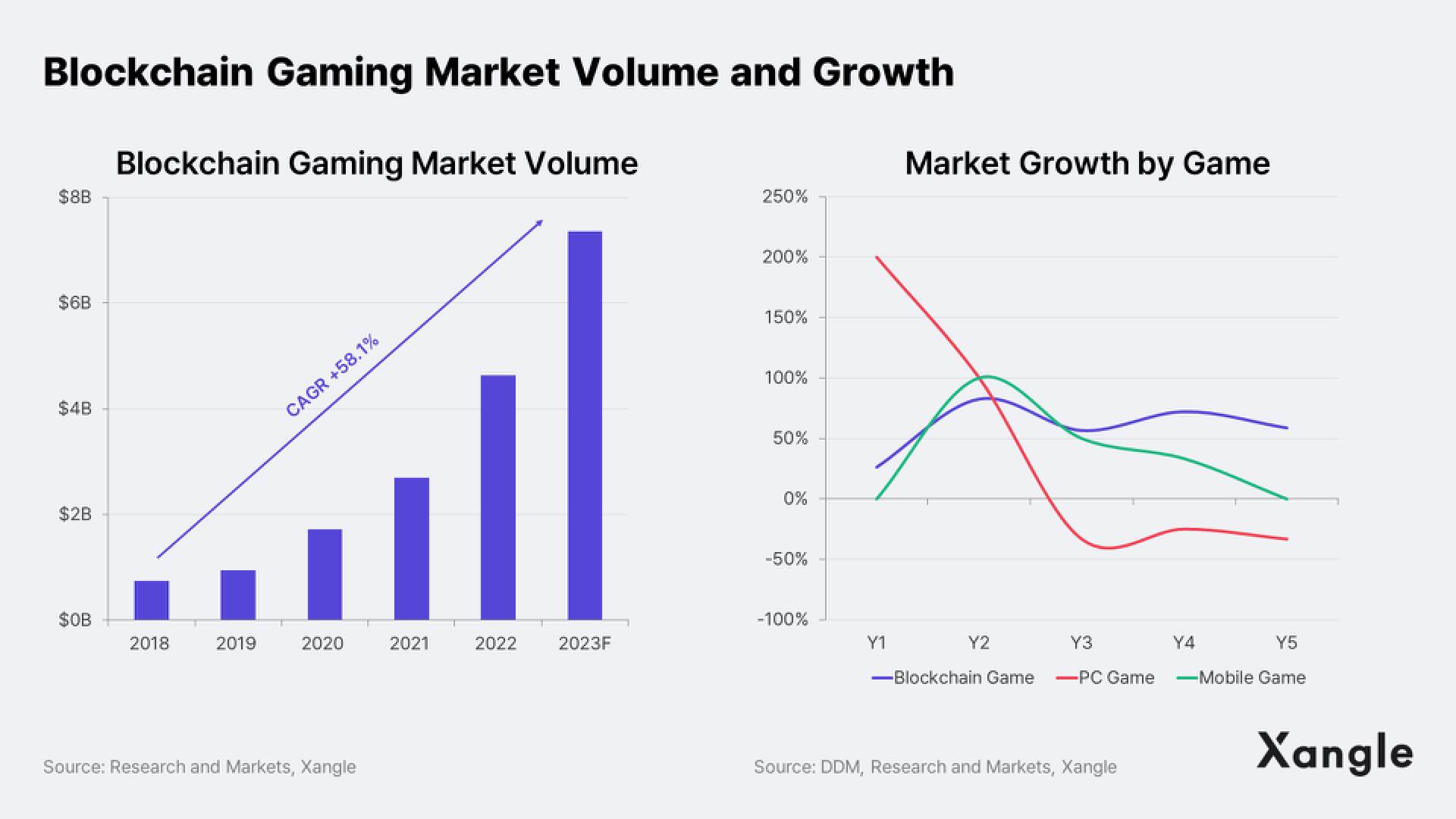
Expectation of Successful Cases in the Short Term
Therefore, the question we should be asking is not how fast the blockchain gaming market is growing, but what will happen in the short term and which technologies will accelerate the long-term growth of blockchain games. Short-term expectations include creating initial successful cases, while long-term prospects include benefiting from the growth of the AR/VR hardware market.
From a short-term perspective, just as the PC and mobile game markets have seen success with new genres in the past, leading to the development of more games in those genres and forming a successful cycle, we expect blockchain games to follow a similar pattern. Through initial successful cases, more game developers will join in, further creating more successes. This process will involve various attempts and repeated experiments, leading to improvements and providing game players with new gaming experiences beyond Play-to-Earn.
On the positive side, more and more game developers are getting involved in the blockchain gaming market. South Korean gaming companies play an important role in blockchain game development. Apart from NCSoft, most gaming giants have taken a positive stance on blockchain games. Their approaches vary, from releasing major games in the form of blockchain games to creating original IPs and utilizing blockchain technology in platforms outside of games.
Compared to South Korean companies, many international gaming companies have a more conservative stance on this market. Nevertheless, the trend of major gaming companies such as Bandai Namco, Square Enix, Konami, and SEGA in Japan, as well as Ubisoft and Take-Two Interactive in the West, gradually entering the blockchain gaming market is still growing. Although they have not entered the game release stage like South Korean gaming companies, the rough outline of their first games seems to have been formed.
In the Long Term, Blockchain Games Will Benefit from the AR/VR Industry
In the long term, blockchain games will become the primary content providers for AR/VR hardware and are expected to grow in sync with the AR/VR hardware industry. This expectation stems from the belief that blockchain technology will play a crucial role in the metaverse space realized through AR/VR hardware.
The metaverse is an abstract concept without a specific definition. However, according to the core attributes of the metaverse model proposed by Matthew Ball (a managing partner at the venture capital fund EpyllionCo. and one of the earliest thinkers of commercial metaverse transformation), the potential of blockchain technology will play a significant role in two key areas: data, digital interoperable assets, and the creation and operation of content by different participants.
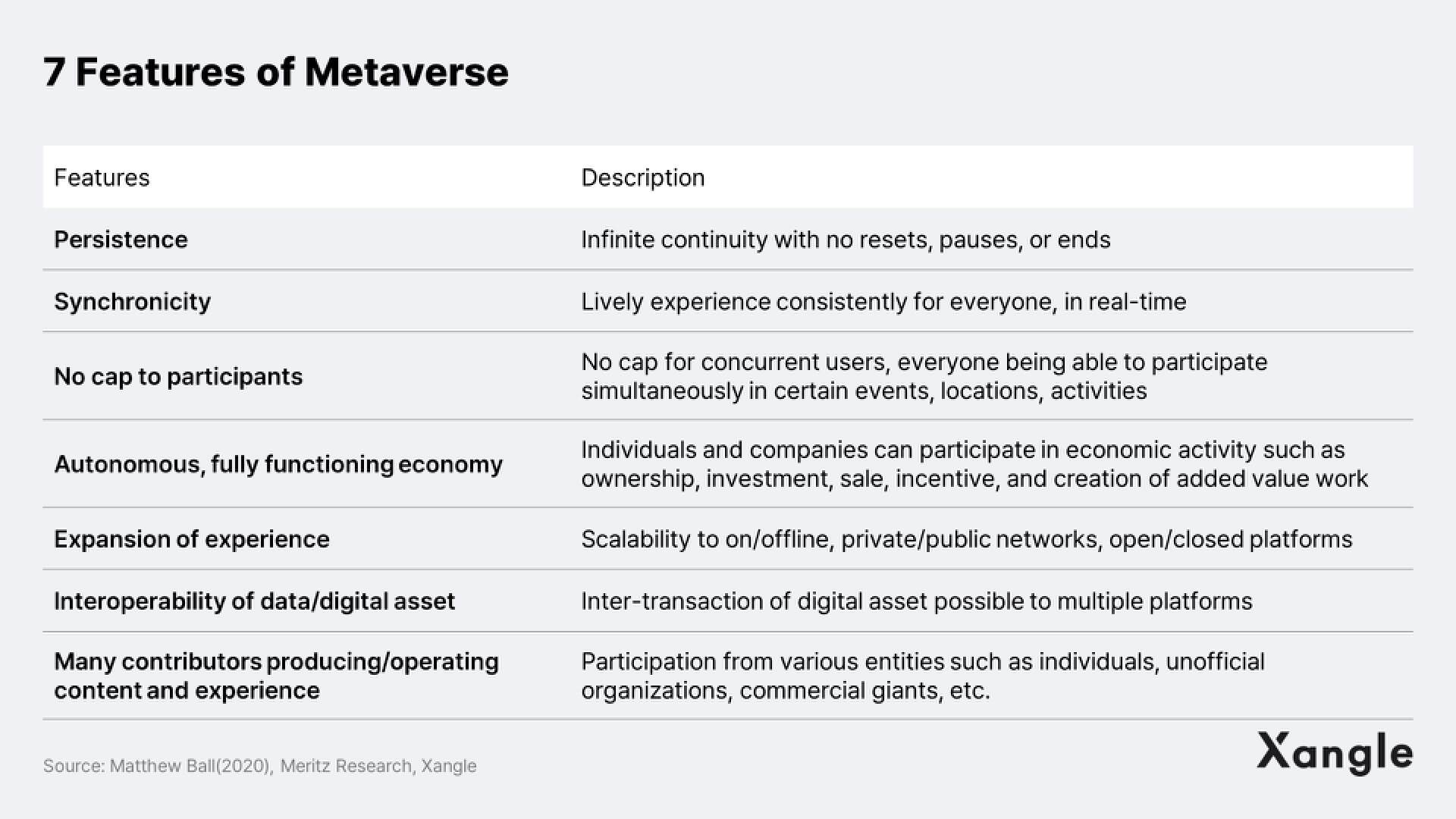
To ensure that digital assets maintain the same value across various platforms within the metaverse, they need to be designed and issued under a unified blockchain standard. This allows digital assets to move freely between different metaverse platforms, ensuring interoperability. Just as PC and mobile games have continued to develop and fully embrace the expanding market and surging hardware, blockchain games are expected to play the same role on AR/VR hardware.
How Can Blockchain Games Succeed?
Why Do Games Based on Popular IPs Always Fall Short?
When we talk about the success of blockchain games, we are not just discussing the quality of the games, but also whether they can attract and retain existing game players and Web3 users. Games that prioritize the Web3 concept over overall quality may not meet the expectations of traditional game players. However, even games based on established IPs, while integrating blockchain features and striving to maintain traditional game quality, may still present obstacles to game players at times.
In the existing game market, games with well-known IPs often achieve great success. This is because when new games are launched, they naturally attract a loyal fan base associated with that IP. Typical examples include Blizzard's Diablo series and Nintendo's Legend of Zelda series.
- Diablo Series: Blizzard's Diablo series was first released in 1996 and recently released its fourth installment, "Diablo 4," setting record-breaking sales. It generated $666 million in revenue within just one week of its release, becoming one of the fastest-selling games in Blizzard's history.
- Legend of Zelda Series: Nintendo's Legend of Zelda series was first released in 1986 and recently released its 20th installment, "The Legend of Zelda: Breath of the Wild." The game also made history for the series, selling over 10 million copies in just three days, becoming the fastest-selling game in the Legend of Zelda series.
However, whether these loyal fan bases can seamlessly transition to blockchain games based on existing IPs is still unpredictable. From the perspective of game players who like original IPs, they may not have much motivation to participate in blockchain games, due to reasons such as lack of new content, high entry barriers, and lack of meaningful gameplay. On the other hand, these games can attract the interest of Web3 game players and token investors. Such games provide Web3 game players with a rare, quality-assured blockchain game and cultivate a user base that can absorb initial selling pressure, making them more robust for token investors than other blockchain games. To attract Web2 game players, these games leverage familiar game IPs. However, games that rely solely on established IPs without carefully considering game design ultimately attract mainly Web3 game players and token investors, which is why blockchain games redesigned without careful planning often fail to succeed.
Current Blockchain Games Have Not Attracted Traditional Game Players
So, how can Web2 game players smoothly transition into the world of blockchain games? When we examine the regional revenue distribution of the global gaming market, we find that the Asia-Pacific region holds a 48% share, followed by North America (26%) and Europe (18%). It is noteworthy that the Asia-Pacific region is mainly dominated by three countries: China (63%), Japan (25%), and South Korea (8%), accounting for over 95% of the market share.
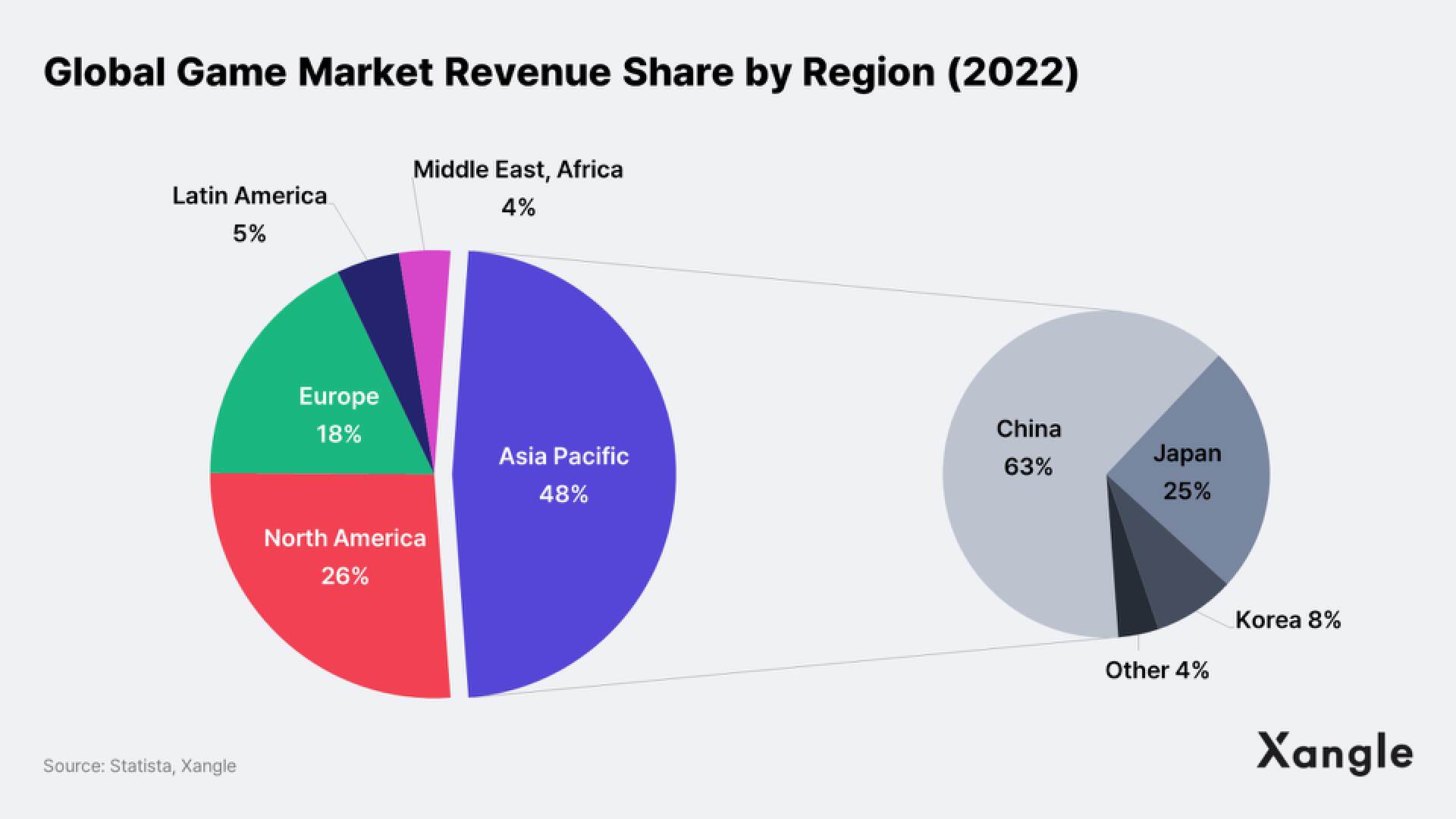
In contrast, top blockchain games like Axie Infinity have user bases distributed in the Philippines (41%), Venezuela (6%), the United States (6%), Thailand (5%), and Brazil (3%). Most of its users come from Southeast Asia and South America, regions with relatively small market shares in the global gaming market, accounting for 4% and 5% respectively. As for MIR4 Global, it has a user base spread across Asia, South America, North America, Europe, India, and Central Asia. Overall, the Philippines stands out in Asia, while Brazil has the most users in South America.
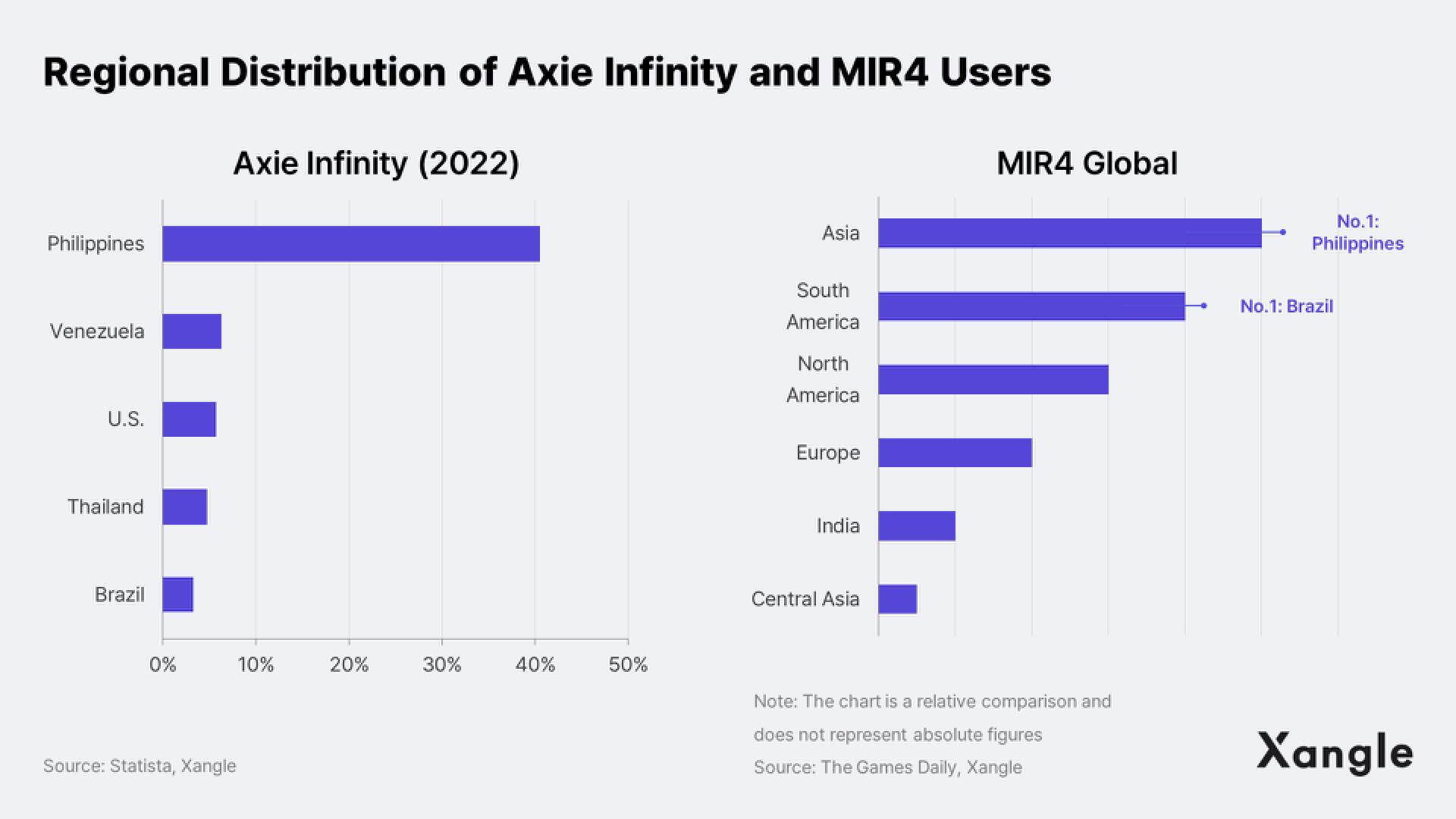
This indicates that blockchain games do not have much appeal to gamers in the three major gaming regions of East Asia (China, Japan, South Korea), North America, and Europe. It is worth noting that in China, games must obtain a license, and the restrictions on blockchain game services in South Korea mean that they are not reflected in the statistics. Japan, following South Korea, is actively exploring the blockchain gaming market, implying that Japan and South Korea may take different paths in the future.
In the West, gamers have higher average incomes, and the "play-to-earn" model of blockchain games is not attractive to them. Additionally, the Western gaming market mainly revolves around single-player games, making it challenging to integrate token economies and NFTs. Unlike Asian gamers accustomed to free-to-play games, Western gamers have historically resisted paid content, leading to strong opposition to tokens and NFTs. When Ubisoft announced its NFT plans in a YouTube video, it faced overwhelming (95%) opposition and ultimately had to delete the video.
Shifting Focus to "Mods"
To attract traditional gamers to blockchain games, we must provide them with game formats they enjoy while also offering the unique gaming experience specific to blockchain. Overcoming initially complex wallet setups, transaction execution, and other challenges is crucial for enhancing user experience. The blockchain industry is well aware of these issues and actively researching methods to improve the UI/UX of blockchain services. With the advancement of blockchain technology, these issues are expected to be naturally resolved, so we will not delve further into this issue. So, what basic features should games have to be recognized by existing gamers while providing unique value that only blockchain can offer?
When blockchain meets gaming, it offers gamers more than just tradable tokens. The true potential of blockchain lies in enabling gamers to freely create their own unique modifications (often referred to as "mods") and profit from them. Even in traditional games, mods are a common phenomenon, allowing players to adjust various elements of the game to create something new. For example, the popular game "PlayerUnknown's Battlegrounds" created by South Korean company Krafton originated from mods in ARMA 2, especially the "DayZ" mod, and subsequently the "DayZ: Battle Royale" mod. "DayZ" modified the ARMA 2 universe, while "DayZ: Battle Royale" adjusted the game rules based on the DayZ game system. Additionally, "League of Legends" originated from the "DOTA" mod in "Warcraft 3," and "Counter-Strike" originated from the mod in "Half-Life."
Although some mods like "Battlefield 1942," "League of Legends," and "Counter-Strike" have developed into independent, successful games, most game companies either restrict or prohibit mod creation. In fact, the right of players to develop secondary content is entirely at the discretion of these companies. From the perspective of game companies, this is a wise choice. Unrestricted modifications may alter the original game's vision, affect the profitability of paid downloadable content (DLC), and even pose risks to the company's intangible assets (such as game code). However, despite these concerns, we can still expect some advantages through integrating blockchain.
Game Companies: Pursuit of Sustainability
Game companies continuously update content to attract and retain gamers. However, regardless of how financially stable game companies are or how interesting their games are, ensuring a continuous influx of new gamers and maintaining their engagement through updates is not an easy task. Additionally, non-gaming content options have exploded compared to the past, such as YouTube, Instagram, TikTok, Netflix, and others. These platforms tirelessly generate content, while our leisure time remains limited. Game companies find it challenging to compete in generating content with users on these platforms, corresponding to the transition of the global gaming industry to a more competitive stage.
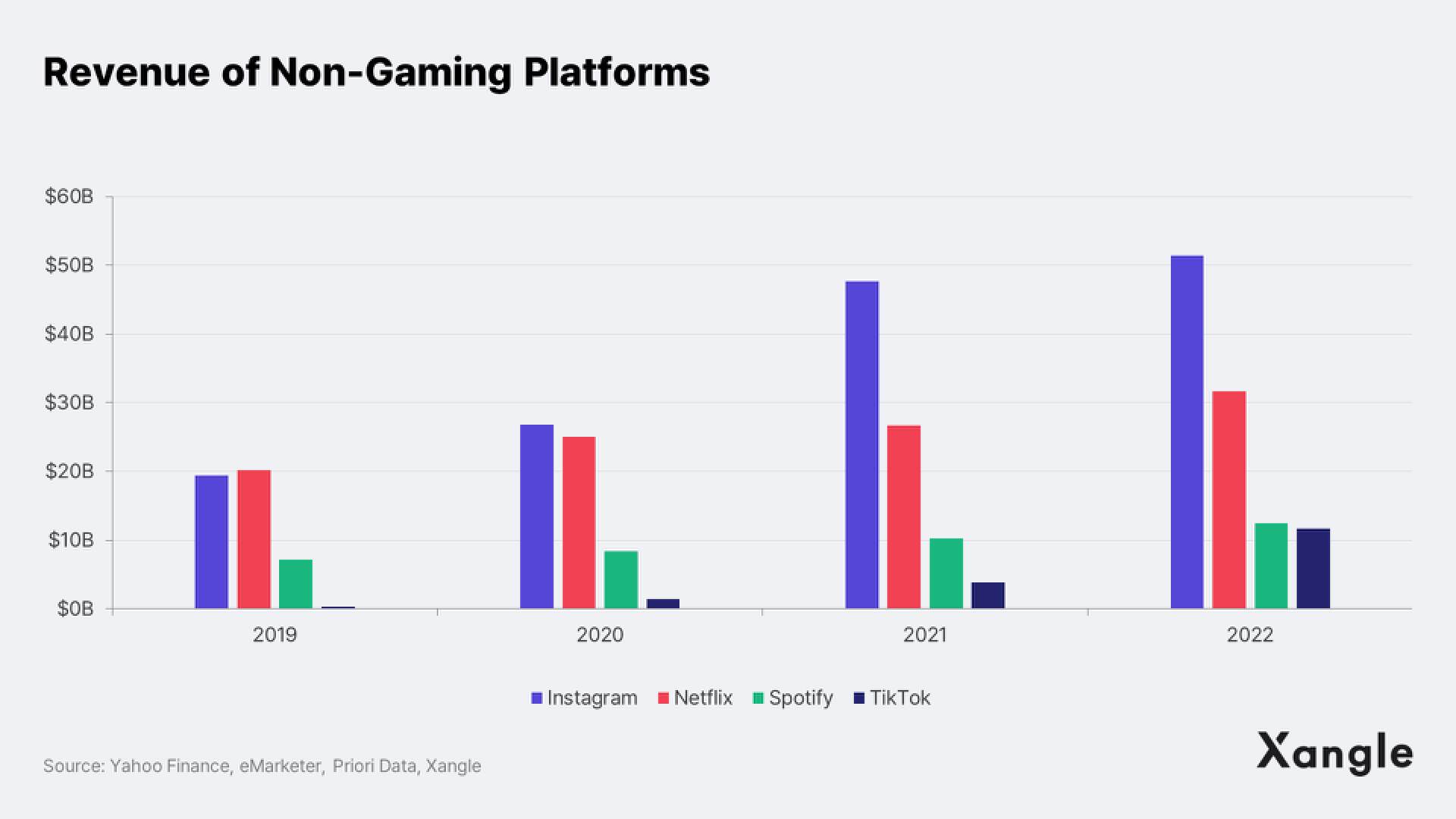
Mods provide a solution to the inherent limitations of sustainability in games. Allowing mods enables game companies to share the responsibility of continuous content updates with gamers. This leads to faster and broader updates, expanding the scope of the game and extending its lifespan by reducing the rate at which gamers exhaust available content. Ultimately, this approach alleviates the burden of sustainability for game companies. Players who frequently create mods understand gamer preferences and needs better than game companies. The effectiveness of this user-centric content creation and its associated revenue-sharing model has been proven on platforms like YouTube and Roblox.
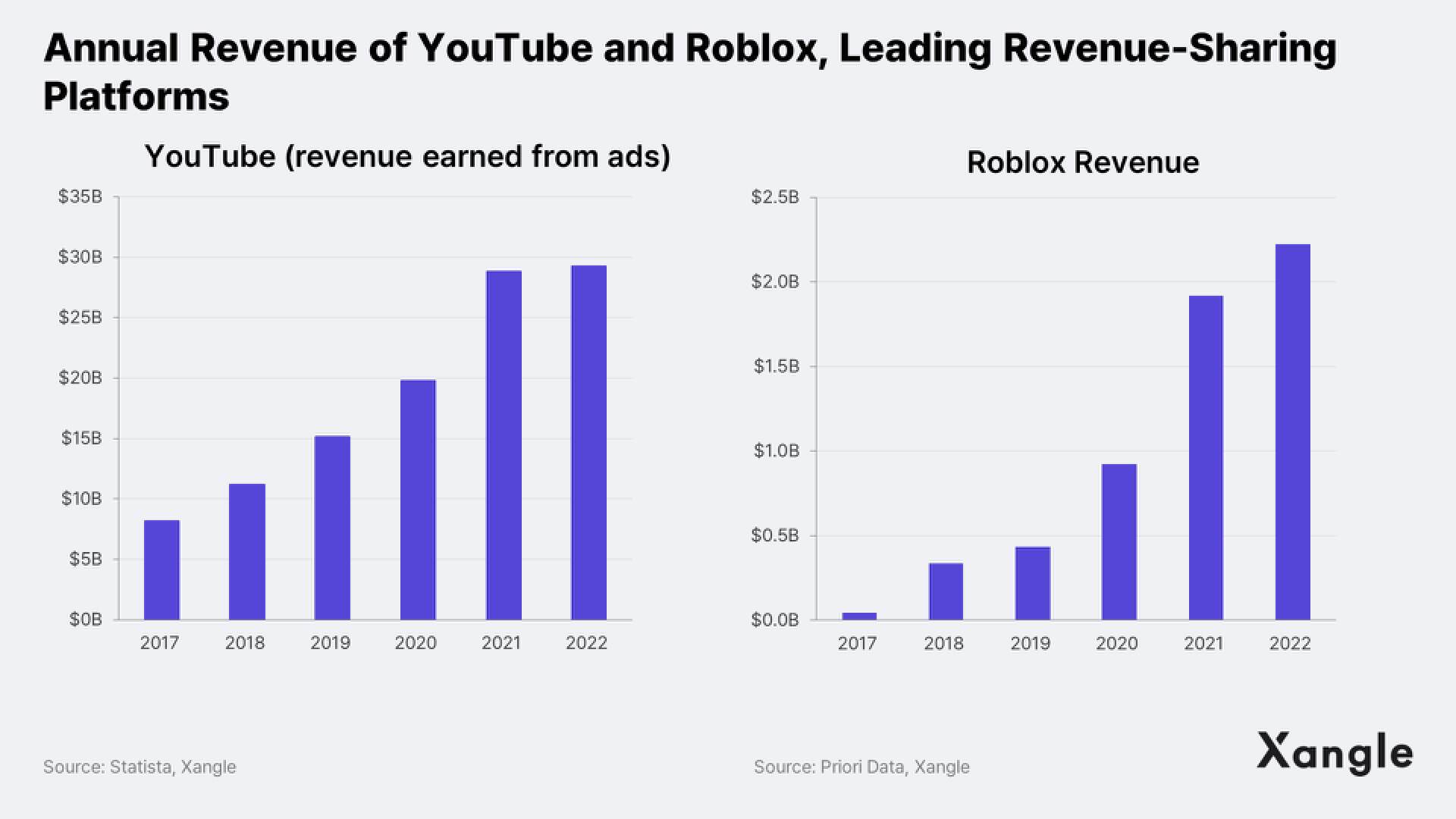
Mod Creators: Earning Revenue
In traditional games, players invest time and effort to create mods out of love for the game and often share them for free. While some mods eventually become independent, profitable games, most remain free. Due to the lack of proper incentive mechanisms, mod creators sometimes abandon development midway or leave mods unattended after completion due to a lack of motivation. In blockchain games, we have the opportunity to reward mod creators through a token economy based on their level of activity and interaction with mods. This approach ensures fair recognition for contributors to the game ecosystem and encourages their continued participation in the gaming community. With an increasing number of mod creators, the variety of available content also becomes richer, expanding the user base and increasing revenue, providing creators with more substantial rewards.
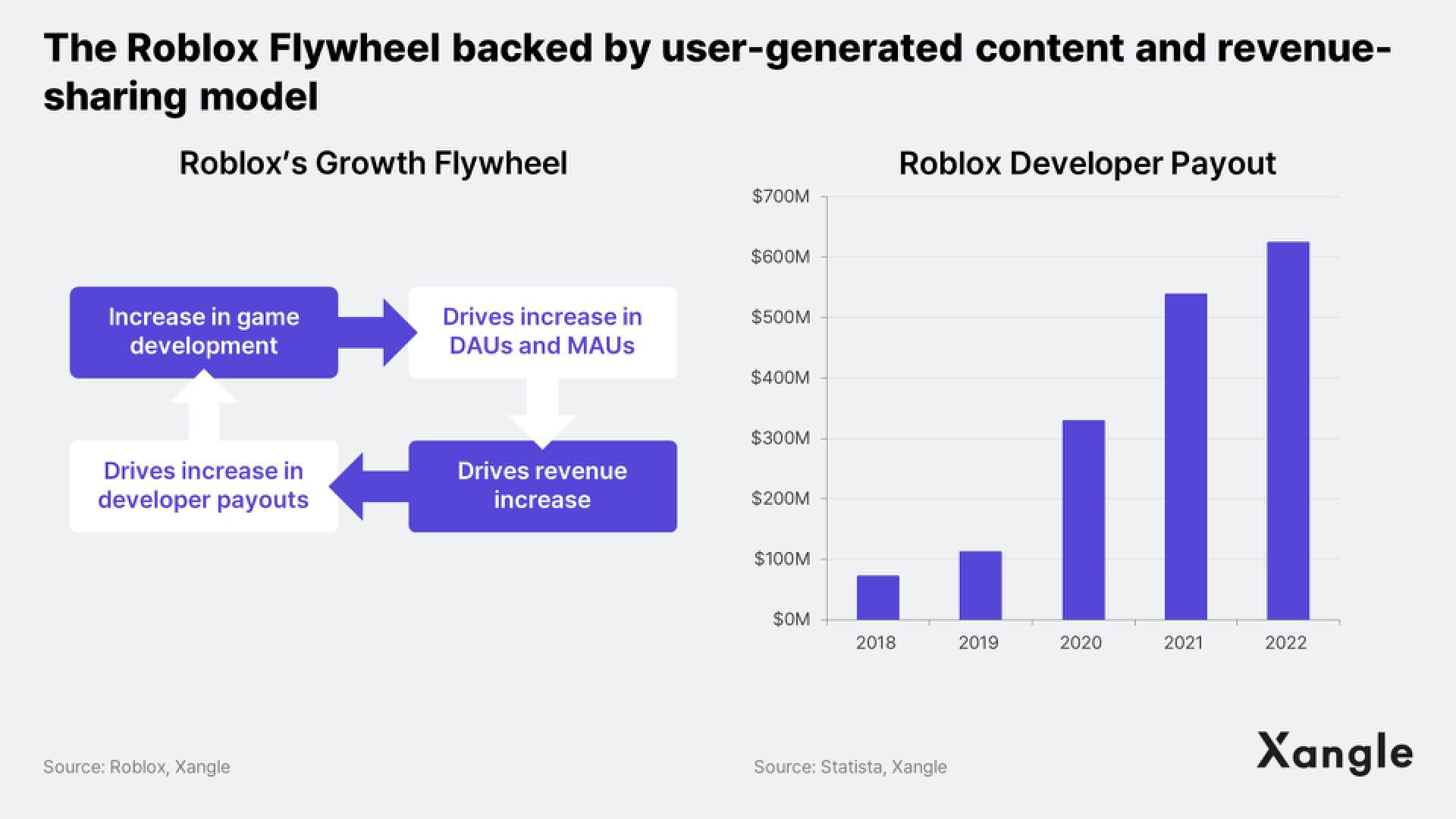
Players: All About Fun
From the perspective of gamers, the advent of blockchain has brought about rapid supply of high-quality content, enhancing the gaming experience. Gamers can delve into creatively adjusted original games and find games that perfectly suit their tastes. While game companies focus on profit and creating games for the masses, mod creators do not have to bear the development costs and profit pressures, allowing them to provide customized games for specific niche players. Additionally, mods that are easily rewritten based on player feedback are very popular among gamers. The introduction of blockchain has elevated the fun of gaming, naturally attracting gamers.
The Potential of Mods in Blockchain Games
Providing gamers with the opportunity to create secondary content through mods and profit from it can create a win-win situation for game companies, mod creators, and gamers. However, the following issues have arisen: mods are not a unique feature of blockchain games. What sets blockchain games apart? Will Web2 game companies break free from their current closed mindset and allow complete modifications? As mentioned earlier, unrestricted modifications can bring various side effects.
The answer to the first question lies in the uniqueness of blockchain games, primarily interoperability and transparency. In traditional games, each mod typically operates in its isolated world with different customs, rules, and economic systems, essentially making them independent games in the eyes of players. Therefore, transitioning from one mod to another entails significant conversion costs. However, when mods built on the same blockchain can share in-game assets and economic systems, gamers no longer need to worry about such costs. They can invest an equal amount of time, effort, and resources to enjoy a more immersive gaming experience.
However, this may lead to a significant problem: it may disrupt the balance between early and late players. Most traditional games achieve equality among all players through server separation or the introduction of seasons, ensuring that everyone competes in a fair environment. This provides motivation for late players to enjoy the game while extending the game's lifespan by attracting these new players.
If roles and in-game assets can be used without restrictions across all mods, narrowing the gap between early and late players becomes challenging. Of course, whether to build a larger user base to enhance the game's sustainability or to maximize profits by favoring a core player group, even if it deepens the imbalance, depends on the judgment of each game company or mod creator. However, it is crucial to consider taking possible measures to prevent a situation where only a few players continue to dominate, thus avoiding imbalance.
Another advantage of blockchain games is transparent profit sharing. In existing platforms that adopt revenue-sharing models, such as YouTube or Roblox, it is often difficult to determine the standards for profit distribution, and it is unclear whether profits are truly settled according to these standards. However, using blockchain, profits are automatically allocated based on smart contracts, and all settlement records are transparently accessible. This increases players' trust in game companies and contributes to the vitality of the game ecosystem.
Regarding the second question, of course, we should not expect game companies to completely open their game resources and development rights from the beginning. Allowing extensive modifications may lead to issues such as altering the initial vision or infringing on intangible assets. Nevertheless, some game companies are exploring this path and conducting partial experiments, with Nexon being a notable example. Nexon's MapleStory Universe is an experimental ground to validate the impact and potential of blockchain integration. MOD N is a part of the MapleStory Universe ecosystem, serving as a blockchain game development platform that can utilize Nexon's NFTs and NFTs from external games. Nexon intends to evaluate contributions to the ecosystem based on the popularity of games created using MOD N and provide corresponding rewards.
Conclusion
There is a growing expectation for games to play a central role in driving widespread adoption of blockchain technology. This excitement is amplified, especially as major global game companies announce their foray into this field. However, it must be acknowledged that the blockchain gaming market is still in its early stages. We recommend taking a step back to view the growth potential of blockchain games from a more medium to long-term perspective.
Furthermore, we emphasize the importance of carefully integrating blockchain into games after thoughtful consideration. The pattern adopted by many large game companies is to rely solely on existing IP without careful game design, which may be a challenging path. Instead, games should provide familiar gaming experiences for current gamers while offering unique blockchain gaming experiences. We firmly believe that the most important potential of blockchain lies in granting gamers the freedom to create secondary content and monetize it.
免责声明:本文章仅代表作者个人观点,不代表本平台的立场和观点。本文章仅供信息分享,不构成对任何人的任何投资建议。用户与作者之间的任何争议,与本平台无关。如网页中刊载的文章或图片涉及侵权,请提供相关的权利证明和身份证明发送邮件到support@aicoin.com,本平台相关工作人员将会进行核查。




